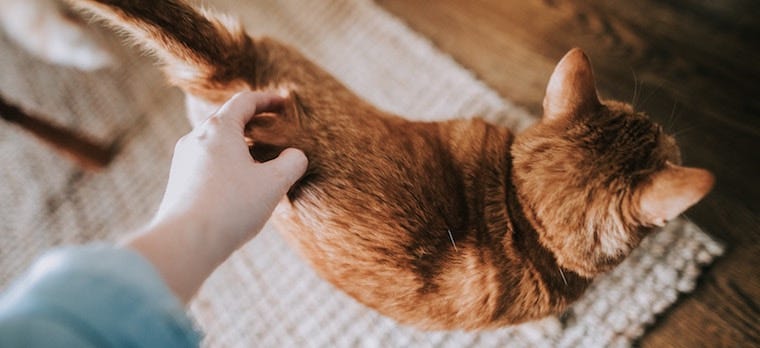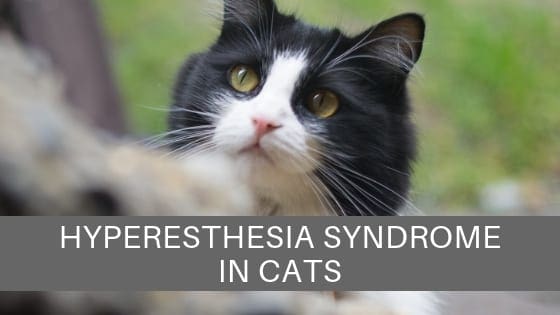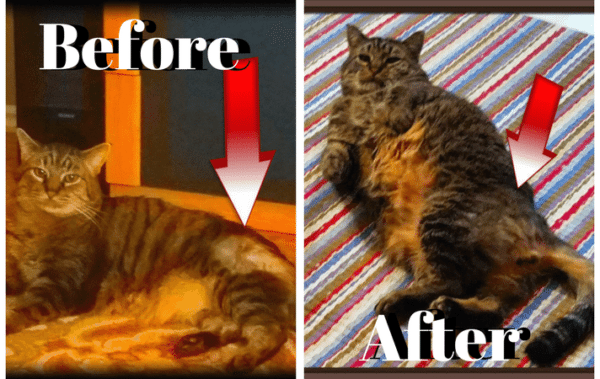Hyperesthesia In Cats Uk
Sometimes tapping the skin that is twitching with your finger will help, or you can try tossing a favorite toy in front of him. Feline hyperesthesia syndrome has been variously called rolling skin syndrome, neuritis, twitchy cat disease, and atypical neurodermatitis (shell, 1994).
/FelineHyperesthesiaSyndrome-446c022ad7d4444188e5ff7632d1c0c7.jpg)
Feline Hyperesthesia Syndrome
Excessive and unusual vocalizations, wild and uncontrolledjumping and running and presumed hallucinations.

Hyperesthesia in cats uk. Feline hyperesthesia syndrome (fhs) is a behavioral condition also linked to some neurological and dermatological disorders. “cats with hyperesthesia syndrome are extremely sensitive to touch in the lower back region. What you will initially notice is the way your cat suddenly jumps up and turns around towards her tail.
Feline hyperesthesia syndrome is perhaps one on the scariest experiences you will ever have with your cat as it can appear almost like your cat has become possessed, even for a short period. Since the cause of feline hyperesthesia is still unknown, ruling out other health issues first is. Hyperesthesia in cats is poorly understood and sometimes ignored as typically unpredictable feline behavior.
Cats may appear scared or depressed, which differentiates feline hyperesthesia from the occasional and perfectly normal “cat crazies” most cats develop feline hyperesthesia when they are young — between one and four years of age is typical. However, that’s about the extent of our knowledge, oh, except that it’s generally agreed this is a mild condition, which doesn’t deteriorate, and not a single cat has died from it. By definition, hyperesthesia means “abnormally increased sensitivity of the skin.”.
Siamese, burmese, himalayans, and abyssinians are at highest risk, but any breed or sex of cat can. Feline hyperesthesia syndrome causes and risk factors. There are some experts that link this disease to rippling skin disease, while there are others that suggest it is much more than that.
A cat with hyperesthesia may lick at her back, flank area or tail. Cats suffering feline hyperesthesia may suddenly become inexplicably and intensely hyperactive, and even aggressive. The condition appears to start in early adulthood, and there is a higher incidence in siamese, although it can develop in any cat.
Feline hyperesthesia syndrome is still rather poorly understood. It is a rare disorder in cats where the cat has episodes of frantic biting or licking of the back half of their body. While all cats may occasionally display sudden bouts of hyperactivity or odd behavior, the behaviors displayed by cats with hyperesthesia are extreme, and they're accompanied by certain physical symptoms.
Tuttle in a scientific article, feline hyperesthesia syndrome, also known as rolling skin disease, is a complex and poorly understood syndrome that can affect domestic cats of any age, breed, and sex. Abstract = feline hyperesthesia syndrome (fhs) was first reported in 1979and described as an accentuation of an otherwise normal behaviorin cats consisting in episodes of tail chasing, biting or licking thelumbar area, flank, anal area or tail; Hyperesthesia means “abnormally increased sensitivity of the skin.” it may begin with signs typical of feline psychogenic alopecia and then escalate.
Some feline experts suggest that this health issue is caused by brain activity and electrical pulses. The syndrome may also be referred to as feline hyperaesthesia syndrome, apparent neuritis, atypical neurodermatitis, psychomotor epilepsy,. Thru process of elimination my cat has been diagnosed with feline hyperesthesia.
It is also known as ‘rippling skin disease’, ‘neurodermatitis’ and ‘psychomotor epilepsy’. Although any age of cat can be affected, the first episode of fhs usually appears between ages 1 and 5. Fortunately, the condition is rare, but for cat owners who witness their pet enduring rolling skin syndrome, the ailment can be unsettling.
Feline hyperesthesia is a analysis of exclusion, that means it’s the one possibility left after eliminating different circumstances and illnesses that trigger comparable signs and conduct. If you are with your cat when an episode begins, try to distract or redirect him. Feline hyperesthesia syndrome and feline psycogenic alopecia are two interesting and often overlapping syndromes of cats.
It is known by many names including “rolling skin syndrome,”. The majority of the cats were young, with a median age of 1 year at the onset of clinical signs, male (n = 6) and with access to the outdoors (n = 5). I didn't notice it until he had completely stripped the last 2 inches and.
Experts classify hyperesthesia in cats as a neurological condition, in other words it’s a nerve generated problem. It can be a distressing problem for cats and their. Cats that suffer from feline hyperesthesia cannot control their actions.
Never punish or scare your cat, however. Now for the good news. They may have extremely large pupils and vocalize.
Fhs is also known as ‘rippling skin syndrome’ and ‘twitchy cat syndrome.’ certain cat breeds—persian, siamese, abyssinian, and burmese—are genetically predisposed to fhs. As with other cat skin conditions, any resultant wounds for obsessive behaviors should be cleaned. Immediately after an episode of hyperesthesia, some cats will have a grand mal seizure.
The main symptoms include intense scratching and licking at an area of skin. Feline hyperesthesia (fhs) is a weird “twitchy” disorder that makes your cat very uncomfortable. The names are quite a mouthful.
If doable, get a video of your cat throughout an episode of what you watched is hyperesthesia, and take it with you to your veterinary appointment. First reported in 1980 by j. Keep your cat’s schedule as predictable as possible.
During an attack, your cat will behave as if he is reacting to hallucinatory stimuli.

Wisconsin Woman Dials 911 To Report Being Held Hostage By Her Cat Daily Mail Online

Picture Of A Cat With Feline Hyperesthesia Poc

How To Diagnose And Treat Hyperesthesia Syndrome In Cats 11 Steps

Feline Hyperesthesia Syndrome Symptoms And Treatment Lovetoknow

Feline Hyperesthesia

Understanding Hyperesthesia In Cats - Pawesome Cats

Rubys Feline Hyperesthesia - Youtube

Feline Hyperesthesia

Understanding Hyperesthesia In Cats - Pawesome Cats

What Is Feline Hyperesthesia Syndrome - Litter-robot Blog

Cat Health Hyperesthesia Syndrome Signs And Treatment

Milly - Beautiful Black Cat With Feline Hyperesthesia - Two Crazy Cat Ladies Cat Feline Cat Remedies Crazy Cats

Feline Hyperesthesia

3 Proven Ways To Help Feline Hyperesthesia - Two Crazy Cat Ladies

Scaredy Cats Feline Hyperesthesia Syndrome - Good Pet Parent

3 Proven Ways To Help Feline Hyperesthesia - Two Crazy Cat Ladies
Feline Hyperesthesia Syndrome Pets4homes

Dr Becker On Feline Hyperesthesia Feline Dog Biting Pets

Feline Hyperesthesia
